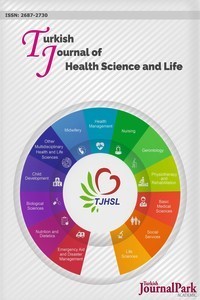THE EFFECT OF VAPOR/HUMIDIFICATION ON THE REHABILITATION OF ADULT PATIENTS DIAGNOSED WITH COPD: SYSTEMATIC REVIEW
THE EFFECT OF VAPOR/HUMIDIFICATION ON THE REHABILITATION OF ADULT PATIENTS DIAGNOSED WITH COPD: SYSTEMATIC REVIEW
ABSTRACT IntroductionChronic Obstructive Pulmonary Disease (COPD) requires long-term oxygen use. Active humidification is required in patients receiving oxygen above 4 L/min to protect the mucosa.AimThe aim is to investigate the effect of vapor/humidification on the rehabilitation of adult, spontaneous breathing patients with COPD.MethodThe study is organized according to PRISMA-P standards. CINAHL, Web of Science, Cochrane Library, PUBMED, Science Direct databases were scanned from beginning to 27.12.2018 in English terms without language limitation. As Cochrane MeSH terms; ‘COPD’, ‘steam’, ’COPD and steam,’ COPD and humidification ‘,’ COPD and water vapor’, ’COPD and moisture‘, ’COPD and high flow oxygen therapy’ were used. 10963 articles have been reached. Repeated studies were conducted with the Mendeley program. Randomized, case-control studies were performed to evaluate. Inclusion criteria were patients who were older than 18 years of age, with COPD diagnosis, spontaneous respiration, the intervention of steam/humidification.Results83 articles were examined in detail and four studies were included. Chatila et al. (2004) suggest that high-flow heat-moisture therapy improves exercise performance and oxygenation; Rea et al. (2010), the positive effects of long-term heat-moisture therapy; Francini et al. (2015), low-flow cold steam/humidification is useless; Cirio et al. (2016) showed that heat-moisture therapy during exercise increases exercise time and tolerance.Conclusion According to the findings; adult patients with COPD who had in long or short term hot water vapor have positive effects on respiratory function and mucosal activity in the case of exercise or resting.
Keywords:
COPD, humidification, steam water vapor, moisture,
___
- Derrick, EH. The seasonal variation of asthma in Brisbane: its relation to temperature and humidity. Int. J. Biometeorol 1965; 9 (3), 239–251.
- Davis R, Gregor GR, Enfield KB. Humidity: A review and primer on atmospheric moisture and human health. Environmental Research 2016; 144, 106–116.
- Jemal A, Ward E, Hao Y, Thun M. Trends in the leading causes of death in the United States, 1970–2002. JAMA 2005; 14; 294:1255–1259.
- Halbert RJ, Natoli JL, Gano A, Badamgarav E, Buist AS, Mannino DM. Global burden of COPD: Systematic review and meta-analysis. Eur Respir J 2006; 28:523–532.
- Nishimura M. High-Flow Nasal Cannula Oxygen Therapy in Adults: Physiological Benefits, Indication, Clinical Benefits, and Adverse Effects. Respiratory Care 2016; April, Vol:61, No:4.
- Pisani L, Vega ML. Use of Nasal High Flow in Stable COPD: Rationale and Physiology. COPD: Journal of Chronic Obstructive Pulmonary Disease 2017; 14:3, 346-350.
- Joanna Briggs Institute (JBI) Case-Control Studies Critical Evaluation Checklist 2017; Access address: http://joannabriggs.org/assets/docs/critical-appraisal-tools/JBI_Critical_Appraisal-Checklist_for_Case_Control_Studies2017.pdf. Date of access: 04.01.2019.
- Chatila W, Nugent T, Vance G, et al. The Effects of High-Flow vs Low-Flow Oxygen on Exercise in Advanced Obstructive Airways Disease. Chest 2004; 126, 4. 1108-1115.
- Rea H, McAuley S, Jayaram L, et al. The clinical utility of long-term humidification therapy in chronic airway disease. Respiratory Medicine 2010; 104, 525-533.
- Franchini ML, Athanazio R, Amato-Lourenço LF, Carreirão-Neto W, Nascimento Saldiva PH, Lorenzi-Filho G, Rubin BK, M. Engr, and Naomi Kondo Nakagawa. Oxygen With Cold Bubble Humidification Is No Better Than Dry Oxygen in Preventing Mucus Dehydration, Decreased Mucociliary Clearance, and Decline in Pulmonary Function. Chest 2015; Volume 150, Issue 2, Pages 407-414.
- Cirio S, Piran M, Vitacca M, Piaggi G, Ceriana P, Prazzoli M, Paneroni M, Carlucci A. Effects of heated and humidified high flow gases during high-intensity constant-load exercise on severe COPD patients with ventilatory limitation. Respir Med. 2016; Sep;118:128-132.
- ISSN: 2687-2730
- Başlangıç: 2018
- Yayıncı: Mümin POLAT
